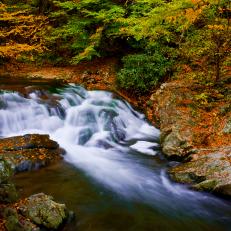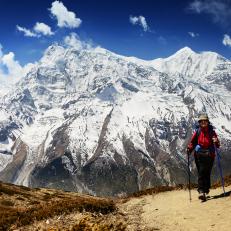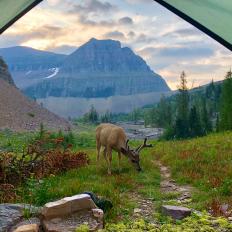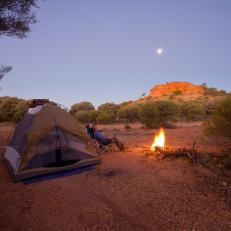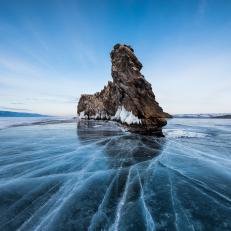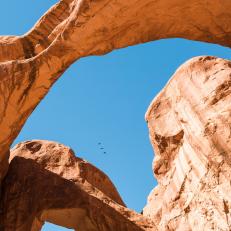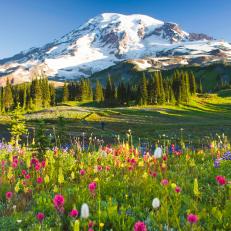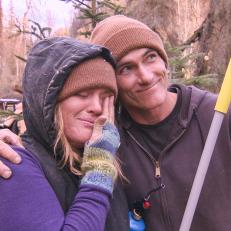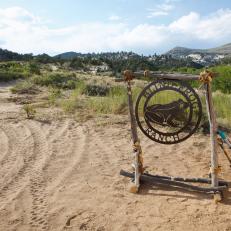The Last Unspoiled Places on Earth
This year more than ever has been a chance to appreciate nature and everything it offers up. With the tourism industry ground to a halt, it’s a perfect opportunity to take a look at some of the world’s unspoilt places that are beautiful because they have been left untouched and remember the importance of keeping them pristine.
Nunavut, Canada
Auyuittuq National Park, which means “the land that never melts”, is just one of the stunning wonders in Nunavut. There are numerous glaciers, jagged peaks, and deep valleys, while hikers cross the 60m Akshayuk Pass in the summer, walking right across the Arctic Circle. And that’s just one spot. From fjords to mountains, tundra to rivers and lakes, there are three regions in the territory, all with distinct terrains. Visitors can hunt, fish, dogsled, mountain hike, walk across ice flows, and kayak rapids.
Hang Sơn Đoòng, Vietnam
Sơn Đoòng is one of the world’s largest natural caves. It was first discovered in 1990 by a local man, and officially explored in 2009, when the man led professional cavers to the site. The cave was made by the Rao Thuong River which carved out the cave, while large dolines - also known as skylights - collapsed, creating giant openings to the sky. Stalagmites the size of buildings have formed from water dripping from the cave ceiling, while the main passage is more than 1.8m long and ceilings can reach up to 200m tall. Sơn Đoòng is so big, it could fit a New York skyscraper. With eerie light filtering through the dry dolines and reflecting off the green pools, the caves are something out of a fantasy world.
Namib Desert, Namibia
A coastal desert in the southern area of Africa, it is known for its burnt orange-golden sands. The Namib has been dry for at least 55 million years and potentially as many as 80 million. Parts of it rival the Atacama Desert for the driest place on earth. The name means “vast space”, and it stretches for more than 1200 miles along Angola, Namibia and South Africa. The dunes can reach up to 980 feet high and span 20 miles long. Incredibly, the temperatures colliding with cold currents create a fog belt that often envelops the desert.
Bhutan
Officially known as the Kingdom of Bhutan, this little visited country is on the Himalayas’ easter edge and known for its dramatic landscapes that range from subtropics to towering cliffs with wild flowing rivers, crystal blue lakes, snow capped peaks and glaciers, and jungles. There are no traffic lights in this country which, so far, has managed to escape the claws of mass tourism and retain its culture and remoteness.
Rock Islands, Palau
The 445 uninhabited limestone islands were formed from volcanic activity and display unique mushroom-esque shapes. They perch atop turquoise lagoons which are surrounded by coral reefs. The islands sustain a huge diversity of plants, birds, and wildlife, alongside more than a dozen shark species. The area contains the highest concentration of marine lakes anywhere in the world. The environment is lush, but harsh, and the only sign of human habitation is from 3100 BC.
Antarctica
Perhaps the ultimate unspoilt destination, this continent is a stark, brutal, and desolate landscape. No trees grow here, and one must travel with a tourism company in order to visit. Admire humbling icebergs, lazing sea lions, breaching humpback whales, and listen to the sound of absolutely nothing.
Fiordland, New Zealand
One of the most dramatically stunning regions of New Zealand, Fiordland can be seen on foot, by air, or by water. The Milford Track is one of the most famous walks, with the 33m-long four day journey taking trekkers past pristine lakes, the tallest waterfall in the country, and panoramic glacier-carved valley views. Lake Monowai is a glassy, mirrorlike body of water surrounded by mountains and best explored by kayaking on a still day.











